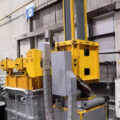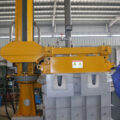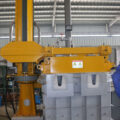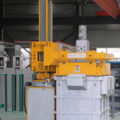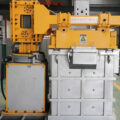The metal degassing systems can achieve hydrogen removal and oxidation inclusions removal. The degassing unit has high degassing efficiency, without affecting production. The degassing process can improve the purity of molten aluminum in a very short time, reduce the waste rate, increase production efficiency, improve the mechanical properties of castings, and enhance the competitiveness of products, which cannot be achieved by traditional degassing methods.
The hydrogen content and non-metallic inclusions of molten aluminum alloy will seriously affect the quality of castings in the melting and casting workshop. During the condensation process, as the solubility of hydrogen decreases, it is too late for hydrogen to escape from the solution. Non-metallic inclusions are too late to float to the liquid level before entering the crystallizer. They will cause white spots and pinholes on the surface of the plate and foil to increase in the subsequent rolling process, and the mechanical properties of the material will decrease, which will eventually lead to a scrap of the product. It is necessary for degassing aluminum alloy melt.
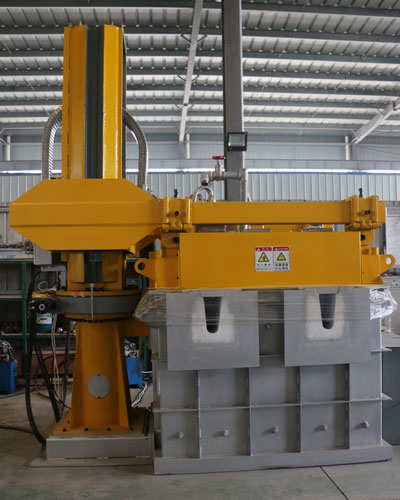
The Metal Degassing Systems use graphite rotor for degassing, forming a large amount of convection in the degassing box, so that small bubbles can be fully diffused in the aluminum liquid. The contact surface between bubbles and molten aluminum is enlarged. At the same time, the degassing unit adopts a sealed design to prevent secondary pollution caused by the ingress of outside air, which can greatly improve the degassing efficiency of the equipment.
The molten aluminum is stirred by controlled rotating graphite and a rotor, while the metered inert gas is pressed into the molten aluminum and dispersed into small bubbles, which are evenly dispersed in the solution metal, and the air pressure of the bubbles is zero. Due to the high partial pressure of hydrogen in the molten aluminum, the hydrogen in the molten aluminum continuously diffuses into the bubbles, and at the same time, some non-metallic inclusions in the molten aluminum are adsorbed on the surface of the bubbles, and the useless hydrogen and some non-metallic inclusions are inert. The gas bubbles float up to the liquid surface.


